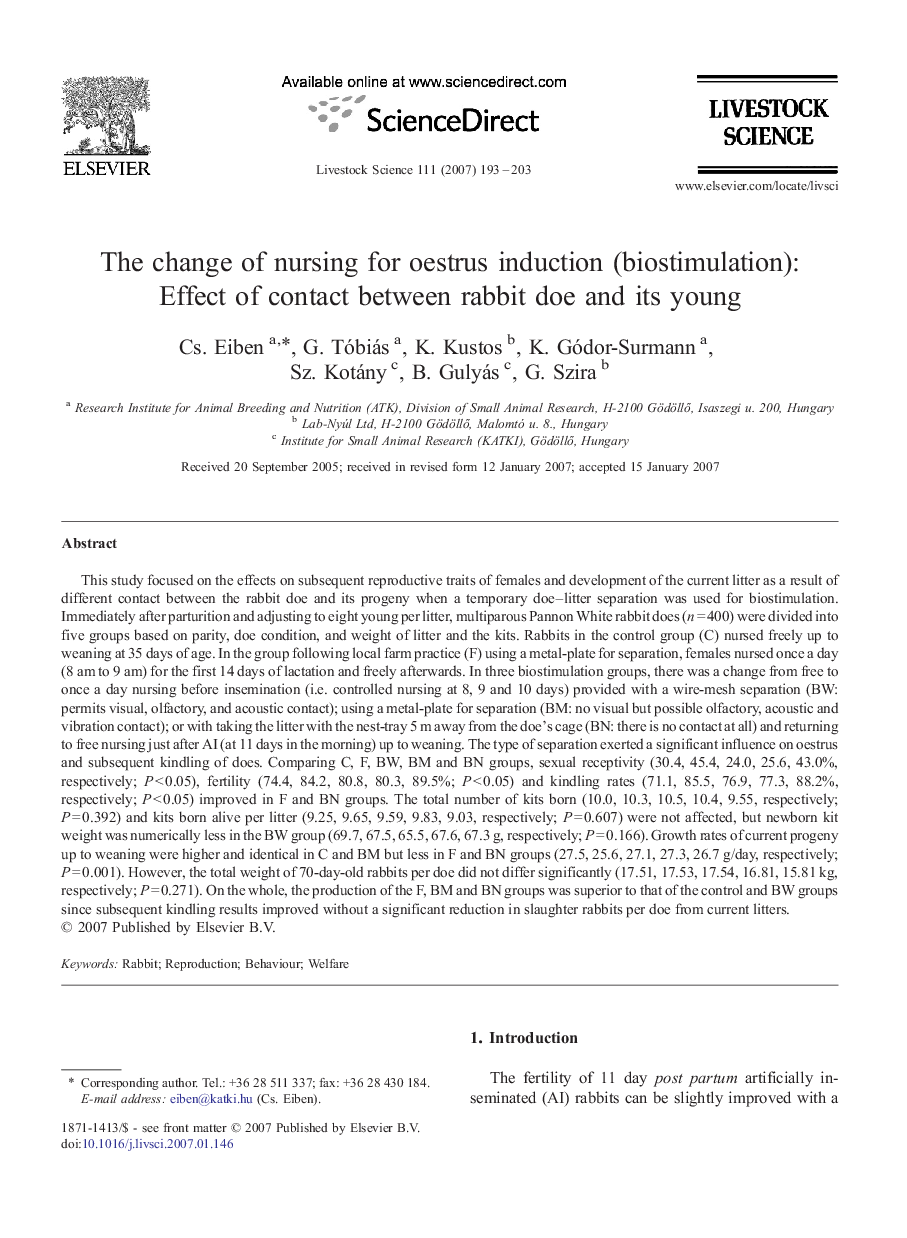| Article ID | Journal | Published Year | Pages | File Type |
|---|---|---|---|---|
| 2448664 | Livestock Science | 2007 | 11 Pages |
This study focused on the effects on subsequent reproductive traits of females and development of the current litter as a result of different contact between the rabbit doe and its progeny when a temporary doe–litter separation was used for biostimulation. Immediately after parturition and adjusting to eight young per litter, multiparous Pannon White rabbit does (n = 400) were divided into five groups based on parity, doe condition, and weight of litter and the kits. Rabbits in the control group (C) nursed freely up to weaning at 35 days of age. In the group following local farm practice (F) using a metal-plate for separation, females nursed once a day (8 am to 9 am) for the first 14 days of lactation and freely afterwards. In three biostimulation groups, there was a change from free to once a day nursing before insemination (i.e. controlled nursing at 8, 9 and 10 days) provided with a wire-mesh separation (BW: permits visual, olfactory, and acoustic contact); using a metal-plate for separation (BM: no visual but possible olfactory, acoustic and vibration contact); or with taking the litter with the nest-tray 5 m away from the doe's cage (BN: there is no contact at all) and returning to free nursing just after AI (at 11 days in the morning) up to weaning. The type of separation exerted a significant influence on oestrus and subsequent kindling of does. Comparing C, F, BW, BM and BN groups, sexual receptivity (30.4, 45.4, 24.0, 25.6, 43.0%, respectively; P < 0.05), fertility (74.4, 84.2, 80.8, 80.3, 89.5%; P < 0.05) and kindling rates (71.1, 85.5, 76.9, 77.3, 88.2%, respectively; P < 0.05) improved in F and BN groups. The total number of kits born (10.0, 10.3, 10.5, 10.4, 9.55, respectively; P = 0.392) and kits born alive per litter (9.25, 9.65, 9.59, 9.83, 9.03, respectively; P = 0.607) were not affected, but newborn kit weight was numerically less in the BW group (69.7, 67.5, 65.5, 67.6, 67.3 g, respectively; P = 0.166). Growth rates of current progeny up to weaning were higher and identical in C and BM but less in F and BN groups (27.5, 25.6, 27.1, 27.3, 26.7 g/day, respectively; P = 0.001). However, the total weight of 70-day-old rabbits per doe did not differ significantly (17.51, 17.53, 17.54, 16.81, 15.81 kg, respectively; P = 0.271). On the whole, the production of the F, BM and BN groups was superior to that of the control and BW groups since subsequent kindling results improved without a significant reduction in slaughter rabbits per doe from current litters.
